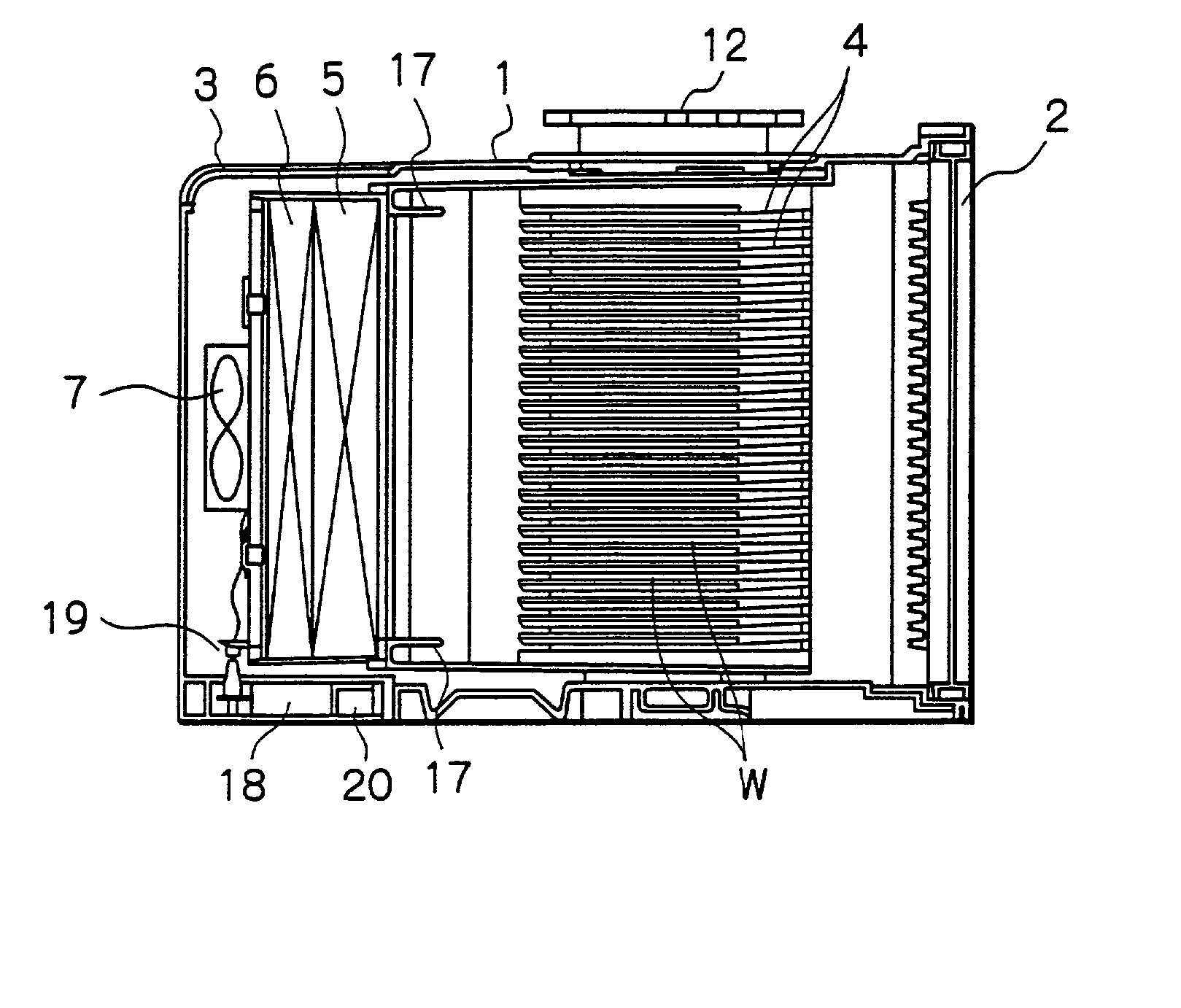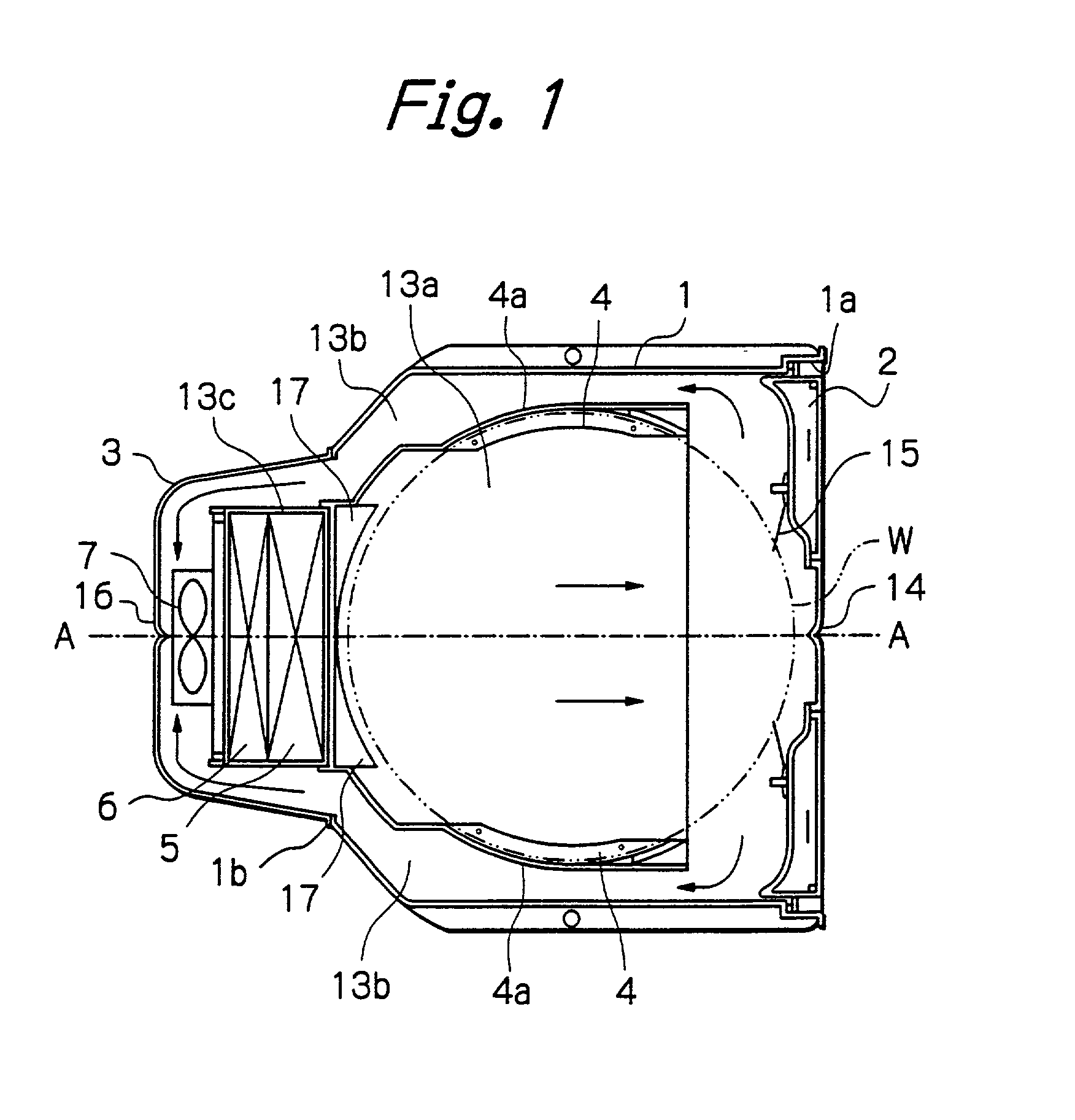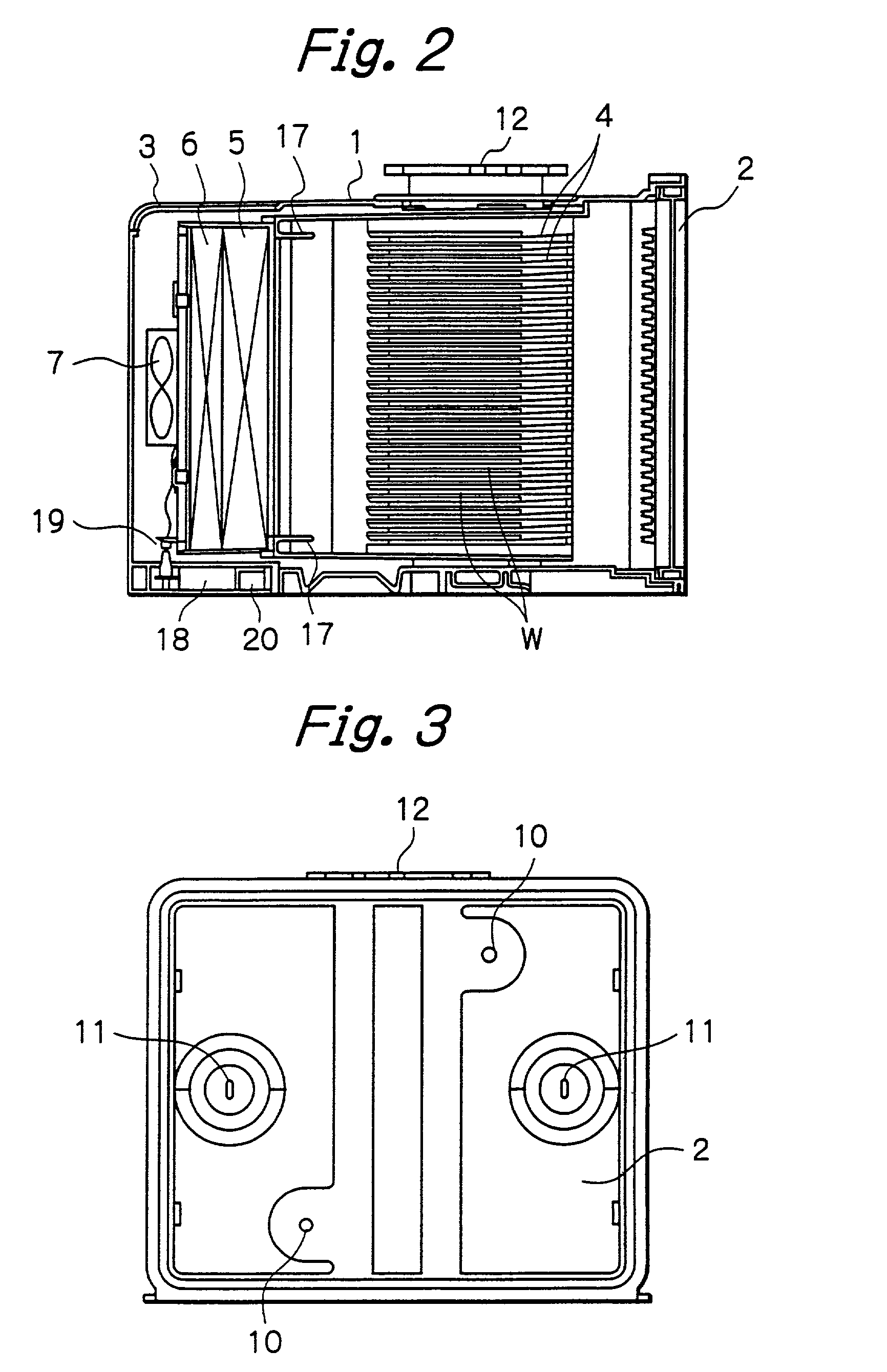Substrate transport container
a technology for transporting containers and substrates, applied in the direction of charge manipulation, separation processes, furnaces, etc., can solve the problems of deterioration of the contamination prevention effect the inability of the filter and the ulpa filter to remove organic traces, and the inability to expect an improvement in the ventilation efficiency of the clean box, so as to suppress the growth of native oxide films, reduce the concentration of water, and maintain the cleanliness of substrates.
- Summary
- Abstract
- Description
- Claims
- Application Information
AI Technical Summary
Benefits of technology
Problems solved by technology
Method used
Image
Examples
first embodiment
[0030] FIGS. 1 to 4 show an automation-compatible substrate transport container according to the present invention. In the substrate transport container, a plurality of 300-mm wafers (substrates to be treated) W are accommodated in groove-shaped pockets disposed in the inside of a container body to transport or store them. The substrate transport container has a cuboid container body 1 and a wafer loading / unloading door 2 adapted to be coupled to an automatic door opener (explained later) for automatically opening and closing the wafer loading / unloading door 2. The wafer loading / unloading door 2 is capable of mechanically opening and closing an opening 1a provided in a side of the container body 1. A cover 3 is located at a side of the container body 1 remote from the opening 1a to cover an opening 1b for insertion and withdrawal of filters and a fan motor stated below. The substrate transport container further has groove-shaped pockets 4 for carrying wafers W, a ULPA filter 5, a ch...
second embodiment
[0050] FIGS. 6 and 7 show the present invention. This embodiment differs from the first embodiment in that the size of wafers W is 200 millimeters, and a door 23 for automation interface is located in the bottom of the container 1. Wafers W that are accommodated in a wafer carrier 22 are put in the substrate transport container. In this embodiment, side walls 22a, 22b of the wafer carrier 22, which are integrated with the groove-shaped pocket 4' constitute the pair of partitions which separate the control chamber 13a and the side chambers 13b. Alternatively, a pair of partitions may be provided in the container box, and the wafer carrier 22 may be disposed between the partitions. The wafer carrier 22 may be received in and took out of the substrate transport container 1 together with closing and opening of the wafer loading / unloading door 2. The method of cleaning air in the substrate transport container is the same as in the first embodiment. It should be noted that in the second e...
PUM
| Property | Measurement | Unit |
|---|---|---|
| diameter | aaaaa | aaaaa |
| temperature | aaaaa | aaaaa |
| diameter | aaaaa | aaaaa |
Abstract
Description
Claims
Application Information
 Login to View More
Login to View More - R&D
- Intellectual Property
- Life Sciences
- Materials
- Tech Scout
- Unparalleled Data Quality
- Higher Quality Content
- 60% Fewer Hallucinations
Browse by: Latest US Patents, China's latest patents, Technical Efficacy Thesaurus, Application Domain, Technology Topic, Popular Technical Reports.
© 2025 PatSnap. All rights reserved.Legal|Privacy policy|Modern Slavery Act Transparency Statement|Sitemap|About US| Contact US: help@patsnap.com



